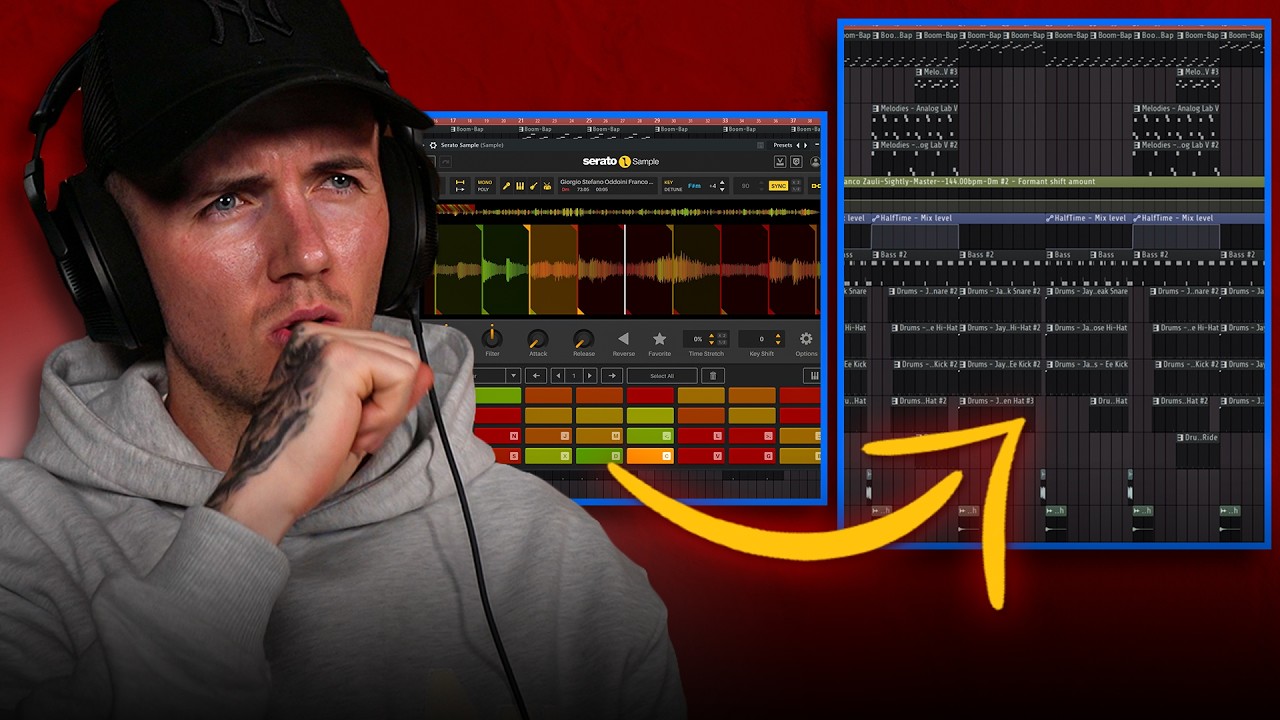My VocalSynth Mixing Setup (2022) - Improving your VOCALOID, UTAU or SynthV Covers!
Summary
TLDRIn this video, the creator shares their personal process for mixing vocal covers using FL Studio. They outline their workflow, starting with normalizing vocal takes and applying essential effects like EQ, compression, and reverb to balance the vocals with the instrumental. Emphasis is placed on using tools like Maximizer (Maximus) for mastering, limiting for volume control, and noise gating to clean up background sounds. The creator also explains how they use automation for dynamic changes in volume and panning, ultimately creating a professional-sounding mix. The video is ideal for aspiring producers looking to refine their vocal mixing skills.
Takeaways
- 😀 FL Studio is Joe's DAW of choice for mixing V-Synth covers due to its intuitive interface and lifetime free updates.
- 🎤 Mixing V-Synth vocals involves both blending them with the instrumental and cleaning up harsh, synthetic voices.
- 🎧 The goal of mixing is to create a cohesive sound where vocals and instruments feel like they’re in the same space.
- 🔊 Normalizing vocals boosts their volume to prevent clipping without distortion.
- 🎛️ Maximus is used on the master track for mastering and boosting smaller elements of the mix for a fuller sound.
- 📏 Fruity Limiter ensures volume management, preventing the mix from exceeding 0 dB and causing distortion.
- 🎚️ EQ is used to adjust frequencies, reducing muffled bass and enhancing clarity and brightness in the vocals.
- ⚙️ Compression reduces the dynamic range of vocals, making them sound more consistent and clear.
- 🎤 A secondary Fruity Limiter with noise gating on the vocal track helps suppress background noise like breath sounds and static.
- 🌐 Reverb is used to simulate the sound of vocals in a physical space, enhancing the mix’s depth and realism.
- 🔄 Automation for volume and panning allows for dynamic changes in the mix, such as making vocals sound closer or farther from the listener.
Q & A
What is the main software used for mixing vocals in this tutorial?
-The main software used for mixing vocals in this tutorial is FL Studio. The creator mentions FL Studio as being more intuitive and offering better value for money compared to Studio One.
What is the purpose of normalizing vocal takes in the mixing process?
-Normalizing vocal takes boosts the volume of the take without exceeding clipping levels, ensuring that the vocal sounds as loud as possible without distortion.
Why is a limiter used on the master track?
-A limiter is used on the master track to prevent clipping and ensure that the overall volume of the song does not exceed 0 dB, which could cause distortion. It helps balance out any particularly loud sections in the mix.
What is the function of the compressor in vocal mixing?
-The compressor reduces the dynamic range of the vocals by squashing the loudest and quietest frequencies, making the vocal sound more consistent and clear. It helps reduce harshness and ensures that the voice maintains a steady volume throughout the track.
What is the role of the 'noise gate' in vocal mixing?
-The noise gate reduces the volume of quieter sounds in the vocal track, such as background noise, breaths, and static, when the vocal is not singing. This keeps the track clean and focused on the main vocal performance.
Why is Soundgoodizer avoided in this tutorial?
-Soundgoodizer is avoided because it tends to produce an overly processed and 'gross' sound. The creator prefers more subtle and controlled mixing techniques for achieving a professional result.
What is the purpose of using EQ (equalization) on vocals?
-EQ is used to adjust the balance of high, mid, and low frequencies in the vocals. This can make the voice sound crisper by reducing unwanted low-end muffle and boosting high frequencies for clarity and presence.
How does the Maximizer plugin contribute to the mix?
-Maximizer is used for mastering, boosting the smaller elements in the mix and giving the track a fuller, more professional sound. It also functions as a de-esser to manage harsh sibilance in the vocals.
What is the purpose of adding reverb to the vocal track?
-Reverb adds an echo effect that simulates the vocal traveling across a room, making the voice feel more natural and 'in the room' with the instrumental. It helps create space and depth in the mix.
What is the role of automation in vocal mixing?
-Automation is used to adjust the volume and panning of tracks throughout the song, allowing for dynamic changes like increasing volume during a climactic chorus or panning the vocals to create a sense of movement.
Outlines

This section is available to paid users only. Please upgrade to access this part.
Upgrade NowMindmap

This section is available to paid users only. Please upgrade to access this part.
Upgrade NowKeywords

This section is available to paid users only. Please upgrade to access this part.
Upgrade NowHighlights

This section is available to paid users only. Please upgrade to access this part.
Upgrade NowTranscripts

This section is available to paid users only. Please upgrade to access this part.
Upgrade NowBrowse More Related Video

RESEP PAKAN PERKUTUT AGAR RAJIN BUNYI 🐦

Best Budget Reflection Filter Vocal Booths On Amazon (2021) || Do they really work?

How To Actually Make Boom Bap Beats (Full Walkthrough)

I Critiqued 400 People's Mixes (Here's What I Learned)

I Reveal How The Pro’s Mix Vocals

IEM Mixing Secrets Pt 1-From a Pro Mixer-Parallel Inputs
5.0 / 5 (0 votes)